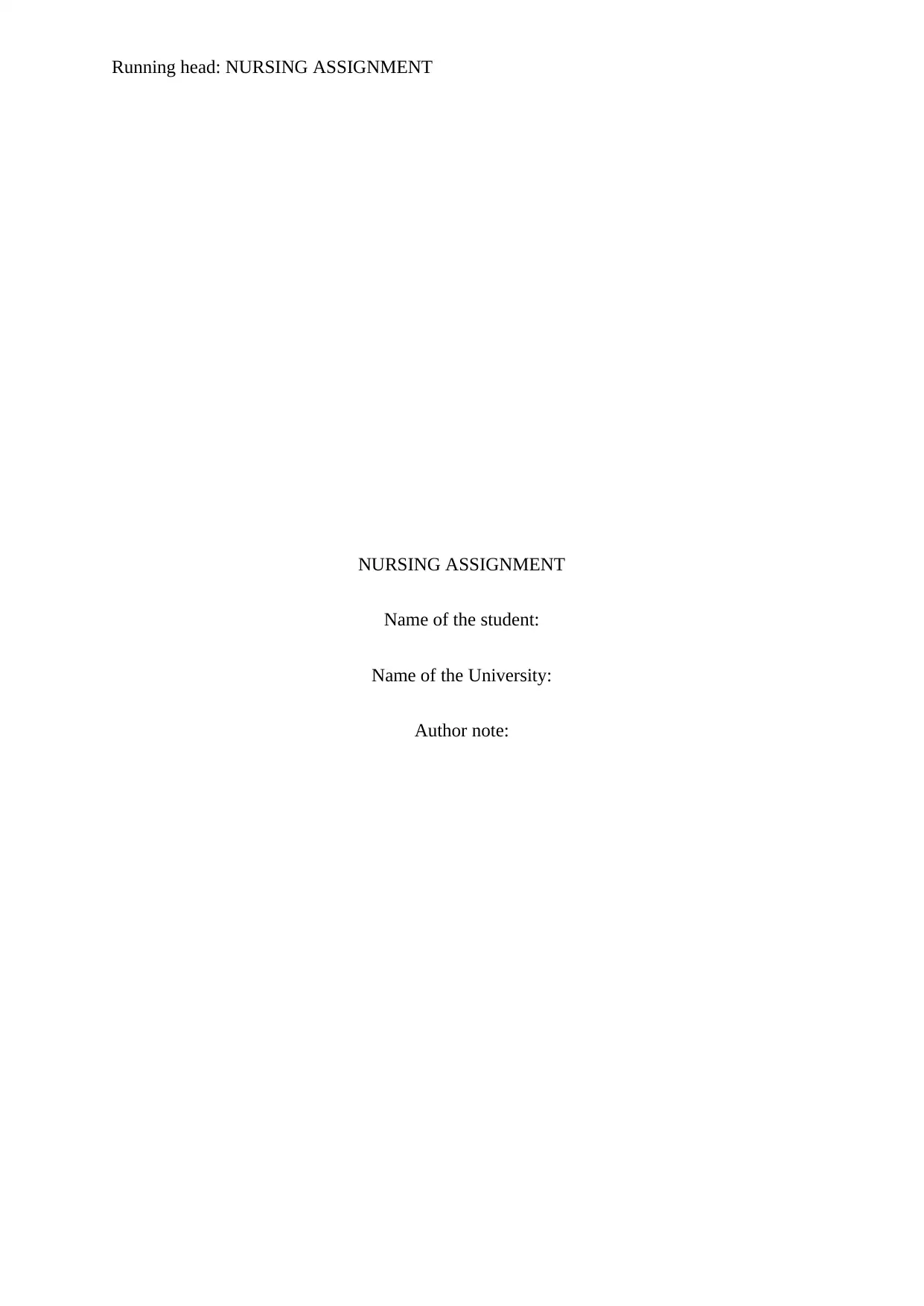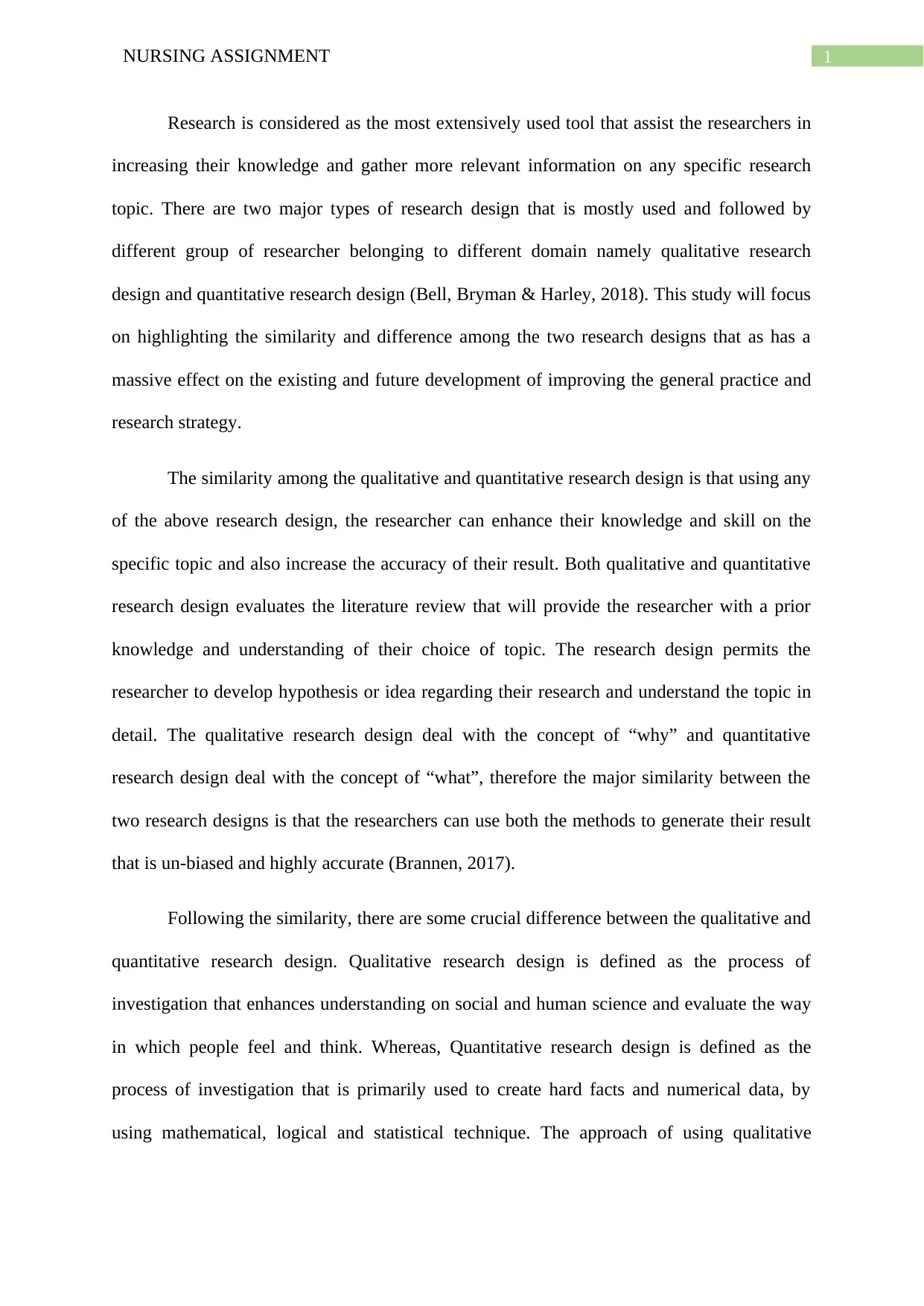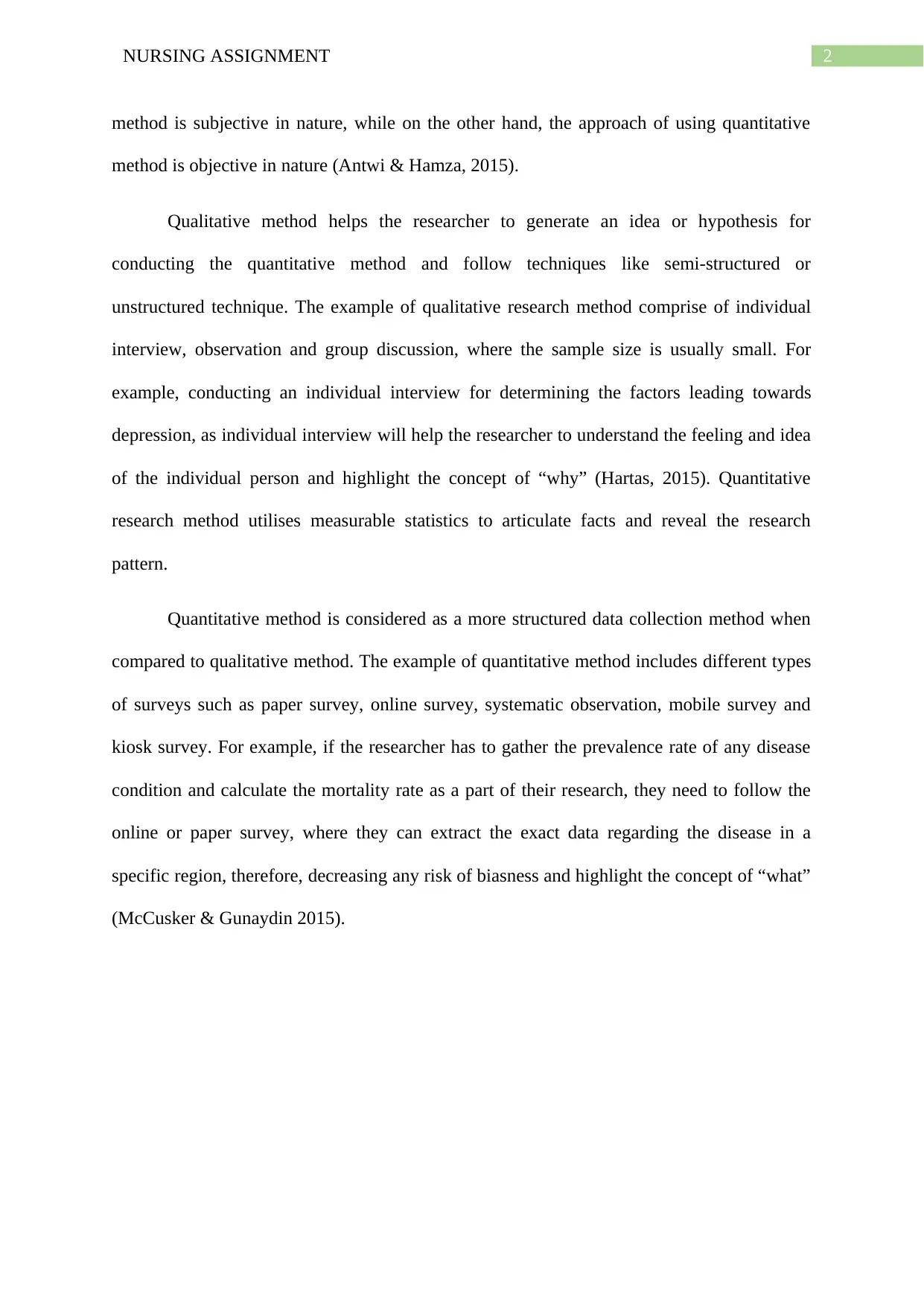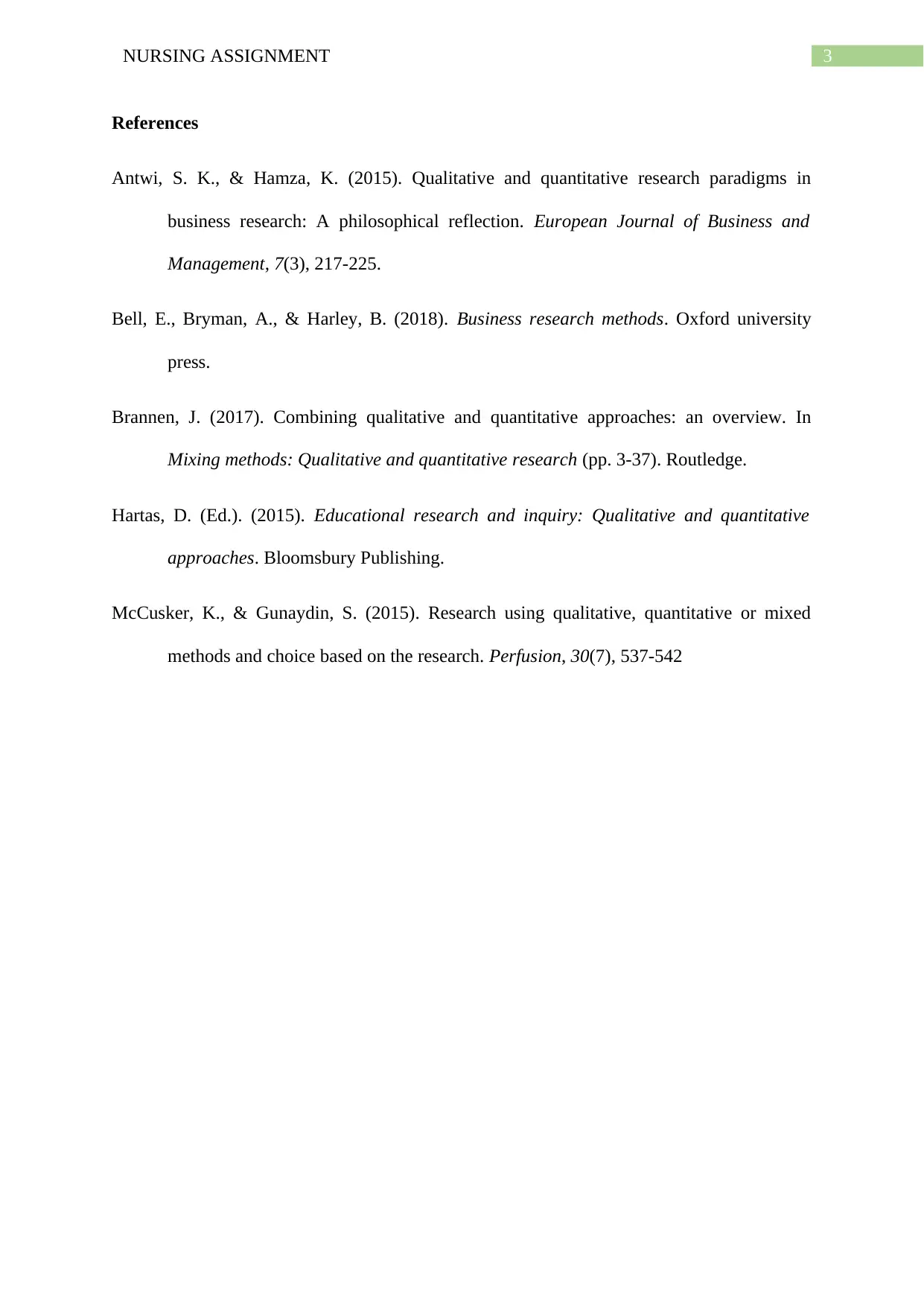Analyzing Research Designs: Qualitative vs. Quantitative Approaches
VerifiedAdded on 2022/10/17
|4
|780
|365
Report
AI Summary
This report delves into the comparison of qualitative and quantitative research designs, highlighting their similarities and differences within the context of nursing research. It begins by defining both research designs, emphasizing that both enhance knowledge and skill in specific research topics and increase the accuracy of results. The report further discusses that both designs evaluate literature reviews, and help researchers develop hypotheses. The core difference lies in their approaches: qualitative research explores "why" through subjective methods like interviews and observations, while quantitative research focuses on "what" using objective, numerical data from surveys and statistical analysis. Examples are provided to illustrate these differences, such as using individual interviews to understand the factors leading to depression (qualitative) versus online surveys to calculate disease prevalence rates (quantitative). The report references several academic sources to support its claims, providing a comprehensive overview of the subject matter.
1 out of 4











![[object Object]](/_next/static/media/star-bottom.7253800d.svg)